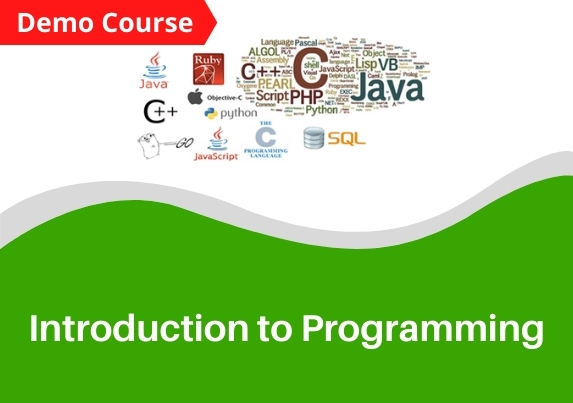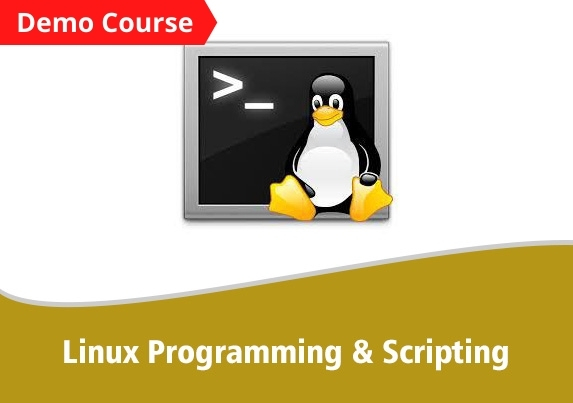Prutor collaborated with EICT IIT Kanpur to create online and live courses.
About the course
यह कोर्स आपको Linux के बारे में जानने में मदद करेगा, जो कि सबसे प्रसिद्ध और सबसे अधिक उपयोग किया जाने वाला ओपन सोर्स ऑपरेटिंग सिस्टम है। इस कोर्स में, आप networked environment में एंटरप्राइज़ लिनक्स सिस्टम को install, configure और maintain करना सीखेंगे। Basic administrative tasks इस तरह से कवर किए जाते हैं: उपयोगकर्ताओं को बनाना और मैनेज करना, फ़ाइल सिस्टम बनाना और मेन्टेन रखना, सुरक्षा उपायों को निर्धारित करना और लागू करना और सॉफ़्टवेयर इंस्टॉलेशन और पैकेज मैनेज करना।
यह कोर्स आपको Linux Operating System के सभी मूलभूत पहलुओं को सीखने में भी मदद करता है, जिसमें Command line interface, administrative privileges, file permissions, tasks को schedule करना, Linux में services, Meteor.js, LAMP को setup करना, phpMyAdmin, WordPress को install करना, Python को install करना और Python सीखने के महत्व को समझाना शामिल हैं। अन्य विषयों में विस्तृत network statistics tracking, networking में practical commands, SFTP, Linux में host files, network host पर command line तक पहुंच, और programs के बारे में सीखना आदि शामिल है। यह पूरी तरह से एक ऑनलाइन कोर्स है, और आप इसे दुनिया में कहीं से भी एक्सेस कर सकते हैं।
Learning Outcomes
इस कोर्स को पूरा करने के बाद, आप -
- Linux का एक ऑपरेटिंग सिस्टम के रूप में मूल्यांकन कर पाएंगे
- Linux पर काम करने के बुनियादी ज्ञान को प्रदर्शित कर पाएंगे
- कई सारे कामों को एक साथ पूरा करने के लिए Linux कमांड लाइन का उपयोग कर पाएंगे
- Desktop और server के बीच Linux में क्या अंतर होता है इसकी तुलना कर पाएंगे
- Files और basic scripting को access और manipulate करने के लिए directories में navigation का प्रदर्शन कर पाएंगे
- Linux system पर उपयोगकर्ता समूह बना पाएंगे
- Linux में एक आम स्क्रिप्टिंग भाषा का उपयोग करके cyber security network scanning की विभिन्न तकनीकों का प्रदर्शन कर पाएंगे
- Linux को एक virtual environment में लागू कर सकेंगे
- Innovative और independent learning के माध्यम से अपनी योग्यता को बढ़ा पाएंगे
- कोर्स के सफलतापूर्वक पूरा होने पर एक सर्टिफिकेट प्राप्त कर सकेंगे
Target Audience
The course can be taken by:
Students: All students who are pursuing any technical/professional courses related to computer science / Information Technology.
Teachers/Faculties: All computer science teachers/faculties.
Professionals: All IT professionals, who wish to acquire new skills or enhance their existing skills.
Why learn Linux?
Linux अधिकांश ऑनलाइन वेबसाइटों को शक्ति प्रदान करता है, क्योंकि यह एक अत्यंत सुरक्षित OS है और यह निशुल्क उपलब्ध है। अधिकांश web server और server जो सेवाएं प्रदान करते हैं, Linux पर काम करते हैं। जब आप Linux सीखते हैं, तो आप उस तरीके को समझने में सक्षम होंगे जिससे कई server users के साथ कम्यूनिकेट करते है करते हैं। Linux का उपयोग दुनिया के सबसे तेज supercomputers में किया जाता है। पर्सनल डेस्कटॉप और लैपटॉप से लेकर web server और data center तक लगभग हर तरह का हार्डवेयर Linux पर चलता है। Linux के बारे में बात किए बिना internet architecture अधूरा है। लिनक्स निशुल्क है, यह open source operating system बहुत सारे मुफ्त सॉफ्टवेयर के साथ आता है और इसमें antivirus की आवश्यकता नहीं होती है।
एक प्रतिष्ठित कंपनी के लगभग हर हायरिंग मैनेजर Linux certified engineer को पसंद करते हैं क्योंकि उनके लिए फर्म के लिए जानकार और अनुभवी उम्मीदवार ढूंढना बहुत मुश्किल हो गया है। इसलिए, उन्होंने पूर्व मानकों के साथ, एस्पिरेंट्स को फ़िल्टर करना शुरू कर दिया है। इसके अलावा, नौकरी चाहने वालों के लिए किए गए साक्षात्कार कॉल का यह ट्रांसलेशन स्पष्ट रूप से Linxu नौकरियों की बढ़ती प्रवृत्ति को दर्शाता है। बाजार में Linux नौकरियों के लिए भर्ती के बारे में बताने वाली उत्साहजनक संख्या बहुत कुछ कहती है। दस में से सात से अधिक manager, Linux-savvy कर्मचारियों को काम पर रखने के मानकों का पालन करते है। यह संख्या अपने आप में बहुत कुछ बताती है क्योंकि यह काफी ज्यादा है। इसकी सटीक संख्या के बारे में जानने के लिए, कोई भी एक बड़ी ऑनलाइन जॉब वेबसाइट खोज सकता है और Linux Jobs की विशाल संख्या को देखकर आश्चर्यचकित हो सकता है।
Course Features
- 24X7 Access: You can view lectures as per your own convenience.
- Online lectures: ~7 hours of online lectures with high-quality videos.
- Updated Quality content: Content is the latest and gets updated regularly to meet the current industry demands.
Test & Evaluation
1. During the program, the participants will have to take all the assignments given to them for better learning.
2. At the end of the program, a final assessment will be conducted.
Certification
1. All successful participants will be provided with a certificate of completion.
2. Students who do not complete the course / leave it midway will not be awarded any certificate.
















